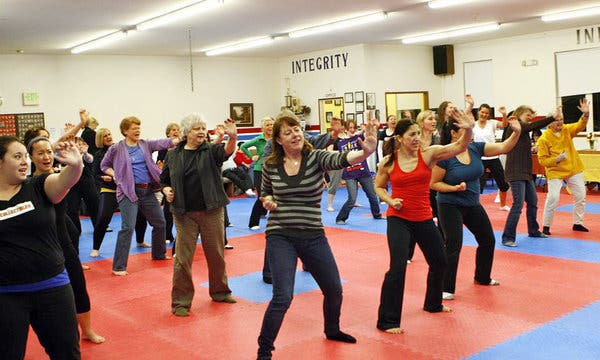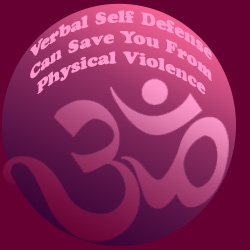
You have come to the right place if you're searching for a blog about self defense. This blog supports the effective use surveillance, wireless, personal protection products. It also educates readers on personal defense strategies and options. It provides tips on how to properly prepare yourself for personal defense, including bug out bags. These tips can help you to be safe and secure. Here are some popular self defense blogs to follow.
Women's self-defense
Empowering Self-Defense Blog is dedicated to teaching women how to defend themselves. This blog offers self-defense training tailored to women's specific needs. It provides a wealth of information and encourages seminars. If you are looking for good advice, this blog is a great place. You will find many tips and tricks for staying safe from potential aggressors. This includes personal protection training as well as self-defense.
Protection not-lethal
Non-lethal self defense methods can be a way to stay safe and secure. But, violence against front-line health workers is unacceptable. Many of us do not have the luxury to carry a firearm. According to the U.S. Department of Justice there are more than a million violent crime committed each year in this country. You cannot risk your fundamental right to freedom and safety.

Asian culture
You can find a website dedicated to Asian culture and martial arts if you're looking for self defense blogs that go beyond the basics. Many martial arts websites only focus on the culture and history of the art. This website goes far beyond that. This blog provides information for Asian-Americans on Asian martial arts philosophy and techniques. You'll also find information about Asian self-defense systems such as Hapkido.
Krav Maga
You need to be aware of a few key points before you start learning Krav Maga for self-defense. First, Krav Maga teaches you how to recognize threat density and react accordingly. Do not panic during an attack as it will only paralyze your ability to think. Krav Maga teaches you to train your mind to think and act fast.
Act in Self-Defense
Self-defense can be used when you are in imminent danger. This requires you to use force in a reasonable and immediate manner. To put it another way, if you're not in your vehicle, you don't have the right to act in self-defense if they try to break into and steal your car. The House Enrolled Act No. 1284 has a provision that prevents people from being held legally responsible for their actions in self-defense.

Mindful Defense
Self-protection can be built upon the strong foundation of mind-body connections. This principle is supported by both neuroscience and behavioral medicine. Being fully present in the present moment means observing reality without bias, judgment, or preconception. Mindful self-defense training can help you protect yourself. By practicing these actions, you can prevent yourself from being a victim of an attack. Here are some tips on how to apply this principle.
FAQ
What does butter do?
Butter is one source of saturated fats. This fat is good for hair and skin health, as well as stronger bones.
Vitamin K is also found in butter, which helps prevent bleeding from cuts or bruises. Vitamin K is combined with vitamin C to prevent bruises.
Butter also contains minerals like calcium, phosphorous and potassium. These elements help to build stronger bones and teeth.
Butter has its drawbacks. Butter contains high levels of cholesterol. Studies show that too much cholesterol can increase your risk of developing heart disease.
Butter is high in saturatedfat, which contributes both to obesity, and raises cholesterol.
But if butter is a must, you can spread it on bread and not dip it in soups or salads. Bread will absorb more oil than pasta or potatoes.
What's the Best Way to Lose Weight?
It's not easy to lose weight. Many people give-up easily because they don’t have the right information.
There are simple steps you can take in order to lose those extra pounds.
First, make sure you eat less calories than you burn. You will gain weight if you eat more calories than you burn.
You should also exercise regularly in order to lose all those calories. You can choose from different types of exercises, including jogging, walking, cycling, dancing, etc.
Third, stop smoking and drinking alcohol. These habits can cause you to consume more calories that you would otherwise.
Fourth, reduce your intake of fatty and processed foods. They can be replaced by healthier options, such as fruits and vegetables, lean meats or whole grains, legumes, seeds, beans, and nuts.
Fifth, you should change your lifestyle to adopt new habits. For example, you may need to get up early every morning to exercise before work.
Sixth: You must be disciplined, and you must follow your diet plan.
You can also burn excess calories by joining a gym, or taking an aerobics course.
These simple tips will help you quickly see results.
How To Lose Belly Fat Fast
There are many methods that can help you reduce your belly fat quickly. One way is to eat less food and drink plenty of water.
A second way to boost your metabolism is by running and swimming.
To quickly reduce belly fat, avoid sitting too much. Instead, stand up frequently throughout the day. This will help to burn more calories.
There is an alternative option if you've tried all of these options and still have trouble losing belly fat.
This involves using a device called a belt. The belt works by tightening around your waist when you sit down.
As a result, you will feel uncomfortable and move around. This makes it easier to lose weight and calories.
Statistics
- According to the American Academy of Dermatology (AAD), men over 50 are at a heightened risk of developing it. (healthline.com)
- An estimated calorie range for moderately active adult males falls between 2,200 to 2,800 calories per day, depending on age. (eatright.org)
- By John Thompson Take a whopping 38% off a set of PowerBlock Pros. (menshealth.com)
- Cardmembers earn 5% Back at Amazon.com with a Prime Credit Card. (amazon.com)
- 10 pounds in a month is likely during a lean bulking phase, especially for beginners. (muscleandstrength.com)
External Links
How To
How do I lose weight while working out?
Exercise burns calories by increasing metabolism and oxygen consumption.
Exercise at a moderate intensity to safely lose weight.
These tips can help you to burn fat while training:
-
Cardio exercises include walking, running, swimming, cycling, running and jogging.
-
Do 30 minutes of exercise three times a week.
-
Add strength training to your workouts if you are looking to lose more weight.
-
Avoid intense training. You can build muscle without having to lose muscle tissue.
-
When exercising, make sure to drink lots of water. Water flushes out toxins, and keeps your body properly hydrated.
-
After working out, drink low-fat protein shakes. Protein shakes can help boost energy and repair muscles.
-
Take smaller meals throughout each day to avoid feeling hungry.
-
Don't skip breakfast! Skipping breakfast can leave you feeling tired and sluggish.
-
Take care of your mental health. Stressful situations can slow metabolism.
-
Keep a positive attitude. Studies show that people who believe they are overweight gain more weight then those who think they are attractive.
-
Get enough sleep. Lack of sleep makes it harder to burn fat.
-
Be active. Move around at least once an hour.
-
Maintain a healthy diet. Eating right keeps you feeling full and satisfied longer.
-
Find relaxation methods. Relaxing doesn't mean your body releases stress hormones which cause muscle tissue to be destroyed.
A balanced diet contains all necessary nutrients for growth and development.
You should eat six small meals per day rather than three large ones. This allows your body time to digest what you've eaten.
Calcium is required to support strong bones. Calcium is found in dairy products like yogurt, fortified milk beverages, orange juices, cereals and bread.
Calcium comes from leafy green vegetables, beans, tofu, nuts, seeds, and cheese.
Vitamin D is required by the body to absorb calcium. Vitamin D is found in certain fortified foods, such as egg yolk and fatty fish.
Vitamin E is crucial for skin health. It can be found as a vegetable oil, wheat germ, peanuts or almonds.
Zinc is essential for healthy immunity and wound healing. Zinc can be found in seafood, legumes and meats.
Zinc deficiency could cause fatigue, nausea, vomiting, and depression.
Too much sugar leads to insulin resistance. This results in higher blood glucose levels. Insulin resistance can lead to weight gain.
Insulin resistance develops when there are high levels of free radicals in the bloodstream. Free radicals can be molecules with unpaired electrons that cause damage to cell membranes.
Most free radicals come from pesticides herbicides, food additives, preservatives smoking, radiation, chemical in cosmetics, lotions and household cleaning supplies.
Free radical damage can lead cancer, heart disease or diabetes, arthritis, asthma, or other forms of aging.
The best way to avoid free radicals is to eat a balanced diet high in antioxidants. Antioxidants protect against oxidative damage.
Vitamin C is found in citrus fruits and beta carotene is found in carrots.
Selenium, copper and manganese are all antioxidant nutrients.
Selenium protects cells from free radical damage. Selenium can be found in Brazil nuts and liver, kidneys, liver, kidneys, shrimp, cod, turkey and lamb as well as chicken.
Copper protects the brain, eyes, lungs, and red blood cells. Copper is found in shellfishes, poultry, meat, organ meats, and other foods.
Manganese, an essential component of bone strength, is crucial. Manganese is found in brown rice, spinach, bananas, prunes, raisins, oatmeal, and lentils.
Zinc is important for healthy growth, reproduction, and wound-healing. Zn can also be found in white fish, lean cuts of meat, poultry, and eggs.